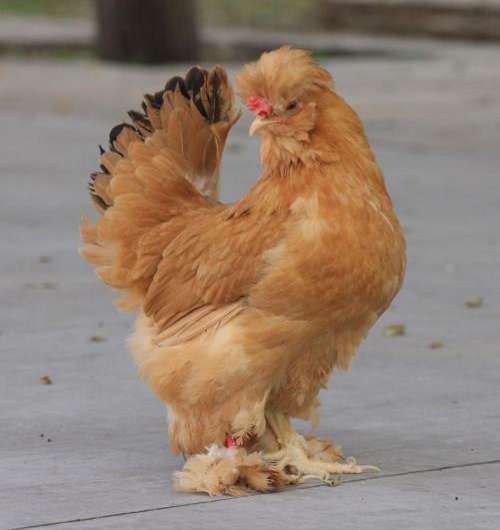November 25, 2014 report
Ancient avian bones found in China may be oldest example of chicken domestication

(Phys.org) —A team of researchers in China studying ancient avian bones found in the northern part of that country, suspect the remains may be that of the oldest known example of chicken domestication. In their paper published in Proceedings of the National Academy of Sciences, the researchers describe their analysis and report on their findings.
Identifying the first culture to domesticate chickens has been hotly debated for over a century, without any clear winner, and it may remain that way as evidence is piling up suggesting that chickens were likely domesticated in a variety of places across the globe and have since undergone comingling, creating a mish-mash of genetic evidence. In this new effort, the researchers sought to find out if ancient bone samples found in four different archeological sites in northern China were chicken ancestors and if so, if they were domesticated. The bones were found alongside charcoal and other animal remains, such as dogs and pigs, both of which are believed to have been domesticated by that time in history, suggesting that the bird bones were from a species that had been domesticated as well. The excavation sites have also given up other findings which suggest the people who'd been barbecuing the animals were farmers, not hunters, which also adds credence to the idea that the birds they were eating were domesticated.
The bones in question (39 in all) had been previously carbon dated to various ages, ranging from 2,300 to 10,500 years ago. The new research focused on gathering genetic evidence and using mitochondrial DNA sequencing to determine if the birds were chicken ancestors, or not. The team compared the DNA of the ancient birds with modern birds of the Galliformes order, which include rock partridges, pheasants and of course chickens and also to samples of ancient bones found in other places, such as Spain, Hawaii, Easter Island and Chile. Their analyses revealed that the birds were members of the genus Gallus, which includes modern chickens. But it's still not enough to prove that they were actually the first example of domesticated chickens because there is still no conclusive proof that the birds were actually domesticated.
More information: "Early Holocene chicken domestication in northern China." PNAS 2014 ; published ahead of print November 24, 2014, DOI: 10.1073/pnas.1411882111
Abstract
Chickens represent by far the most important poultry species, yet the number, locations, and timings of their domestication have remained controversial for more than a century. Here we report ancient mitochondrial DNA sequences from the earliest archaeological chicken bones from China, dating back to ∼10,000 B.P. The results clearly show that all investigated bones, including the oldest from the Nanzhuangtou site, are derived from the genus Gallus, rather than any other related genus, such as Phasianus. Our analyses also suggest that northern China represents one region of the earliest chicken domestication, possibly dating as early as 10,000 y B.P. Similar to the evidence from pig domestication, our results suggest that these early domesticated chickens contributed to the gene pool of modern chicken populations. Moreover, our results support the idea that multiple members of the genus Gallus, specifically Gallus gallus and Gallus sonneratii contributed to the gene pool of the modern domestic chicken. Our results provide further support for the growing evidence of an early mixed agricultural complex in northern China.
Journal information: Proceedings of the National Academy of Sciences
© 2014 Phys.org

















